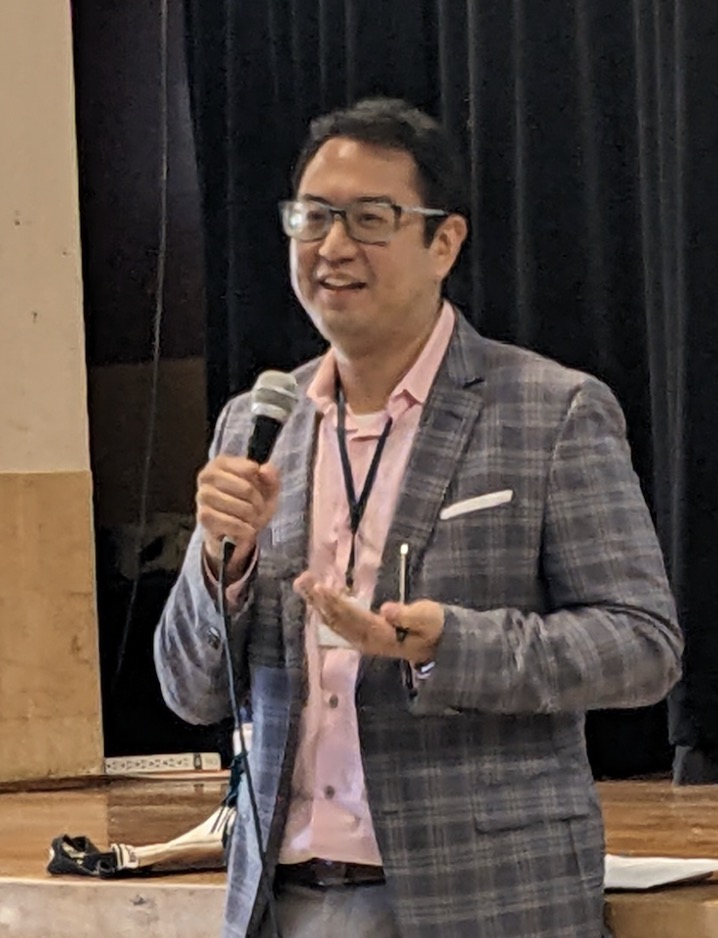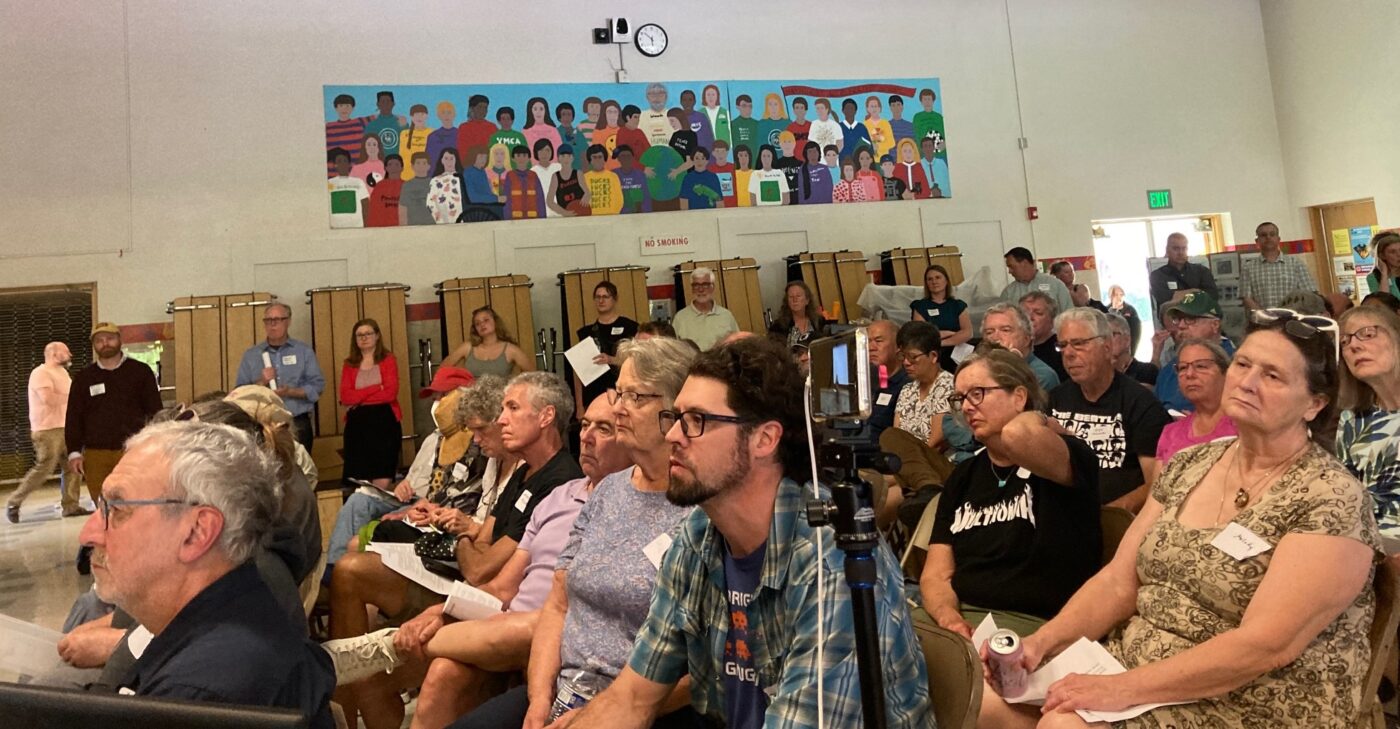
“Alpenrose is forcing the issue.”
– Event attendee
About a hundred and fifty people gathered at the Hayhurst Elementary School auditorium Monday night for a standing-room-only event billed as a “Community Conversation about Transportation in Southwest Portland.” Joining them were nearly 20 elected officials, staff, candidates for office, and representatives from government agencies.
The evening was organized by the Friends of Alpenrose (FoA), with help from Metro Councilor Duncan Hwang and State Representative Dacia Grayber in turning out other elected officials. FoA is a neighborhood organization which came together in response to plans to transform the 51-acre former Alpenrose Dairy site into a 263-unit subdivision.
While the impetus for the gathering was the Alpenrose development, the meeting covered the area’s broader transportation problems.
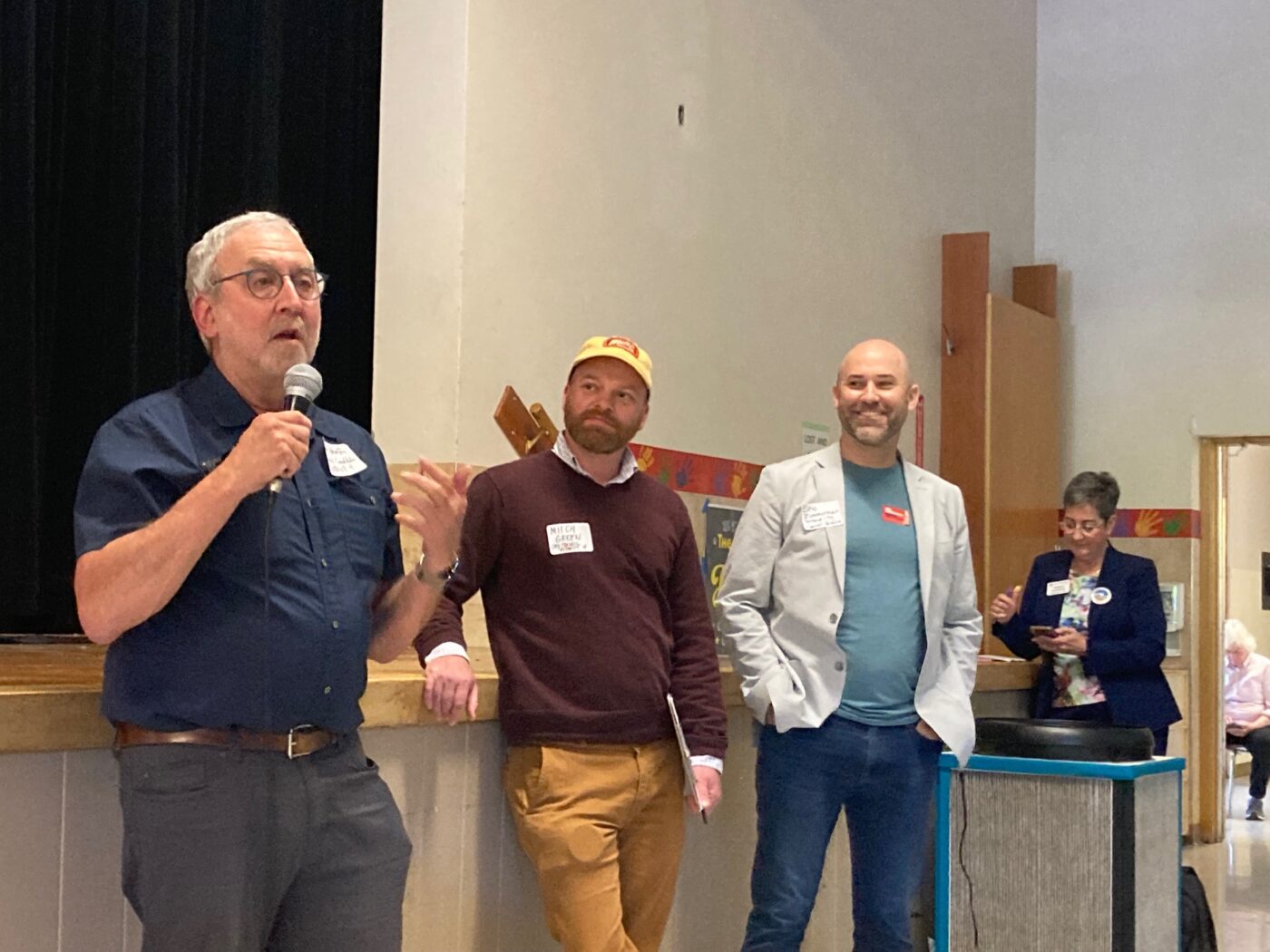
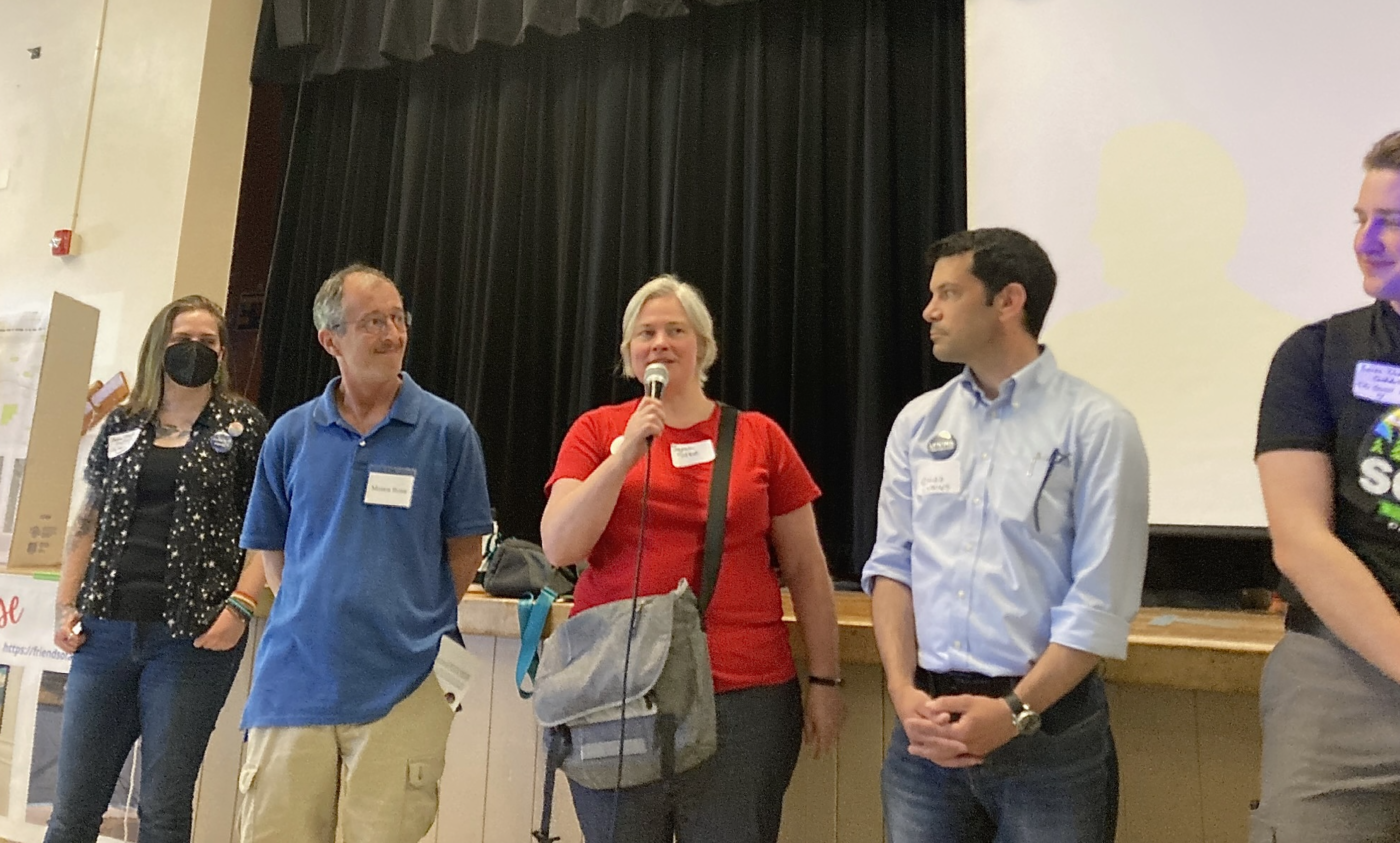
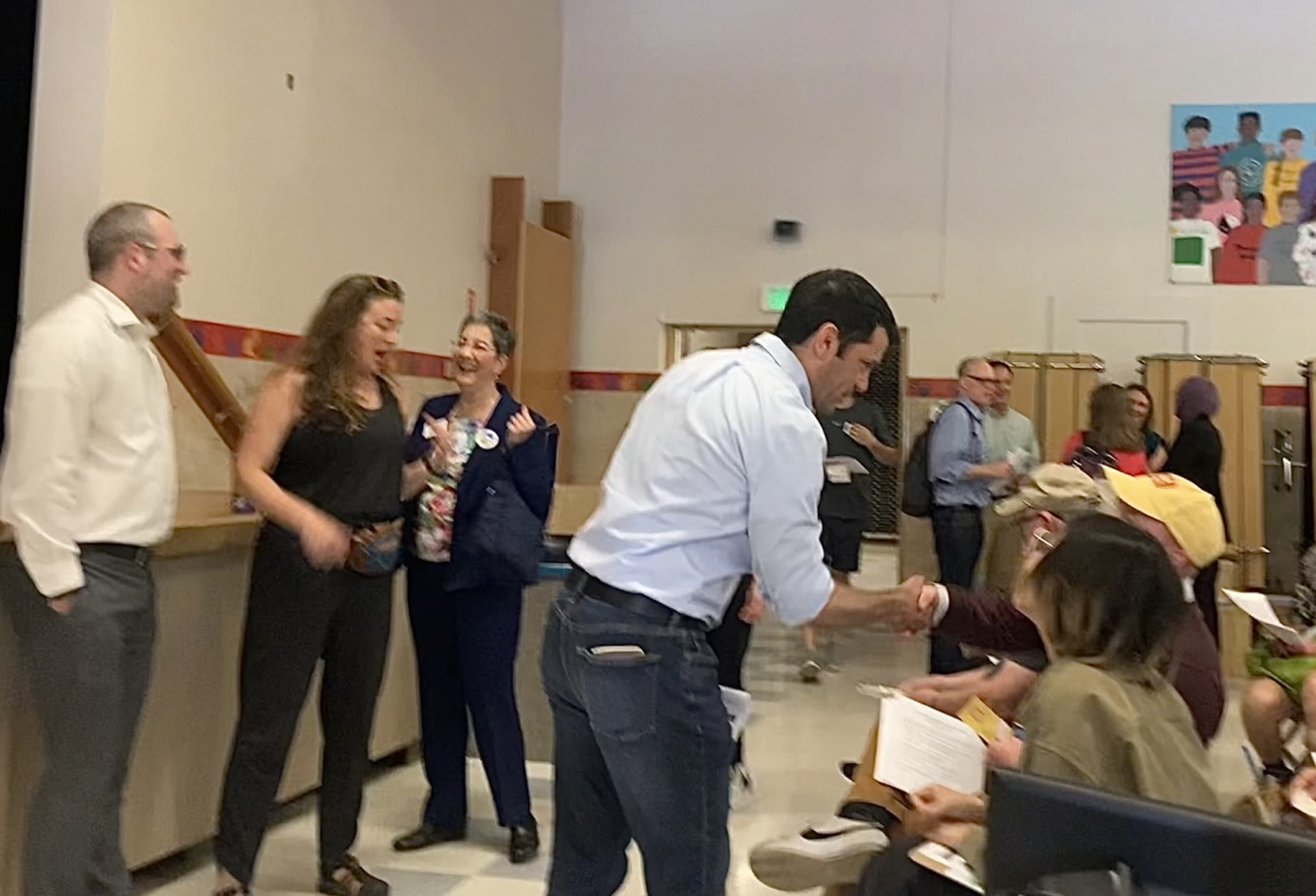
Marita Ingalsbe, a founder of FoA and President of the Hayhurst Neighborhood Association, began the meeting by introducing the public employees in attendance and pointing out how many different jurisdictions were affected by the development plans. Indeed, there were representatives from the cities of Portland and Beaverton, from Washington County and Metro, and from the Oregon Department of Transportation (ODOT) and Trimet. Not to mention that eight of the 18 candidates running to represent Portland City Council District 4 were in attendance.
Let’s just say a lot of hands were shaken and business cards exchanged.
One of the biggest talking points Monday night was the issue of jurisdictional challenges.
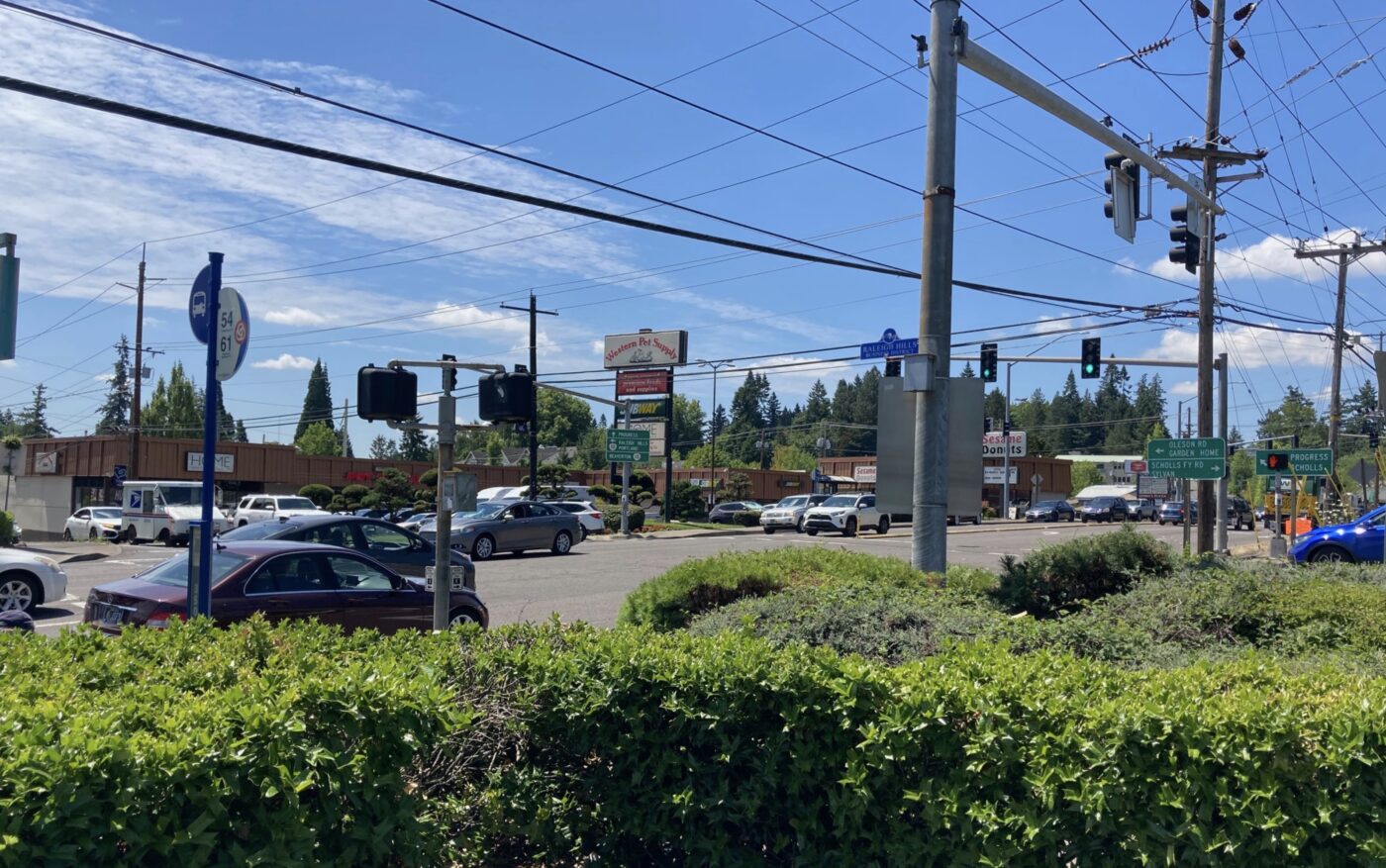
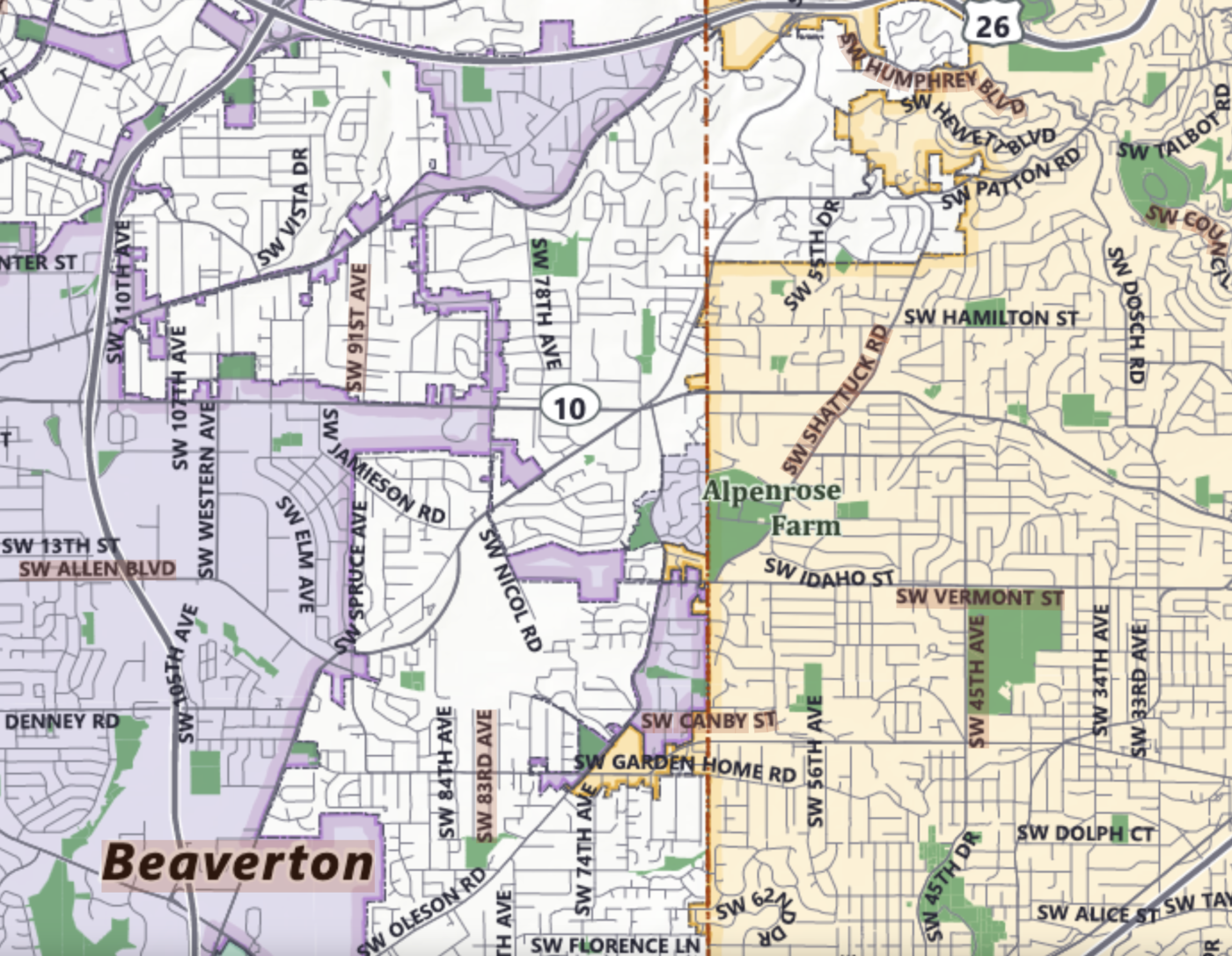
The patchwork of jurisdictions in play is one thing that complicates all transportation issues along the border between Multnomah and Washington counties — not just the Alpenrose development. This north-south border territory has a swath of some of the most poorly designed and dangerous roads you’ll find in the metro area. Those roads don’t have sidewalks or bike lanes, and their cross sections can change as you enter a new jurisdiction.
It’s not right, but it makes sense why that is so. As an advocate, it’s challenging enough to get something fixed when working with just a single jurisdiction, like the City of Portland. But when I was on my neighborhood association’s transportation committee, neighbors would regularly contact me about that speedway known as SW Scholls Ferry Rd, which runs through three jurisdictions: the City of Portland, and unincorporated Washington and Multnomah counties. Why can’t Scholls have a sidewalk, they’d ask. We need another turn lane! We need to get rid of the turn lane! If we narrowed the lanes there would be enough room for a sidewalk and a bike path! I heard it all.
Scholls Ferry is so dangerous for anyone not in a car that TriMet refuses to put bus stops on it. As a transportation volunteer, I never knew where to begin and, apparently, even folks receiving a paycheck don’t know what to do.
In general though, the Washington County side of border territory is mainly unincorporated, with small islands of City of Beaverton within it. The Multnomah County side is mostly City of Portland, which leads to the border territory’s second complication: Portland has neglected to provide basic infrastructure to this part of town for half a century. And no one has wanted to own the growing problem.
But, as one attendee told me, “Alpenrose is forcing the issue.”
Metro Councilor Duncan Hwang’s role
There is a saying in finance that goes like this: “If you owe the bank a million dollars you’ve got a problem. If you owe the bank $100 million dollars, the bank has a problem.” That doesn’t exactly fit this situation, but as I listened to several public sector employees tell the audience to “keep advocating,” I found myself thinking that the problem is bigger than something neighborhood volunteers should be responsible for solving. And that, yes, the neighbors have a problem, but so do all these different representatives and public sector employees. Alpenrose is a whale of a development which, when you consider that recent “missing middle” housing rules allow each eventual owner to add additional units to their property, severely strains the area’s already sub-par transportation system.
(Plus, I was recently in a meeting in which a veteran southwest bicycle advocate quipped “we all have bruises on our foreheads,” presumably from banging heads against the wall for so many decades.)
Hopefully, Metro Councilor Hwang, who played an outsized role in the meeting, and State Representative Dacia Grayber can champion this part of town and orchestrate a solution. Because this is a political problem.
As Marita Ingalsbe explained to me, “It makes sense for Metro as the regional transportation planner to take the lead.”
What about stormwater?
“It shouldn’t take 25 years to get a sidewalk.”
– Mitch Green, city council candidate
In a meeting which covered many, many issues — from sidewalks, to bus service cuts, to transportation plan prioritizations, to matching federal grants, to the state’s upcoming transportation package — one issue I didn’t hear mentioned was the area’s lack of stormwater facilities. In a lot of ways, that’s the problem which unites them all.
Currently southwest Portland does not have a formal stormwater system, instead its run-off drains to streams. Stormwater from impermeable surfaces like sidewalks is not allowed to go, per federal environmental regulation, directly into creeks and streams without treatment to slow it down, cool it off, and filter out pollutants. In many cases, developers cannot be required to provide that treatment for public works like sidewalks, and in recent years public works development review has stopped requiring sidewalks on the frontage of many new developments, thus not capturing for the public good the frontage improvements which are required.
It might make transportation seem more manageable to address it street by street, but, like whack-a-mole, the same inability to put a sidewalk in one place just repeats itself in a different location.
Or, as district four candidate Mitch Green said, “It shouldn’t take 25 years to get a sidewalk.”
My takeaway
This was a remarkable event. I’m impressed that so many residents showed up to a meeting about transportation, and was really blown away to have this collection of elected officials in a room together addressing the topic. That alone felt like an accomplishment.
But to have eight city council candidates already versed in transportation issues, months before the election, and before even holding office, was all I needed to see to believe that our new form of elections, with ranked choice voting and multi-member districts, is working. The level of engagement is the highest I’ve ever seen it, and these candidates are working their rear-ends off.
I don’t have the answers to southwest’s transportation problems. But I know that cutting bus service, and not providing safe networks for walking and biking just makes the area more dependent on the automobile. I’m hopeful that people who know more about this than I do will soon start working together to make the southwest the best it can be.




